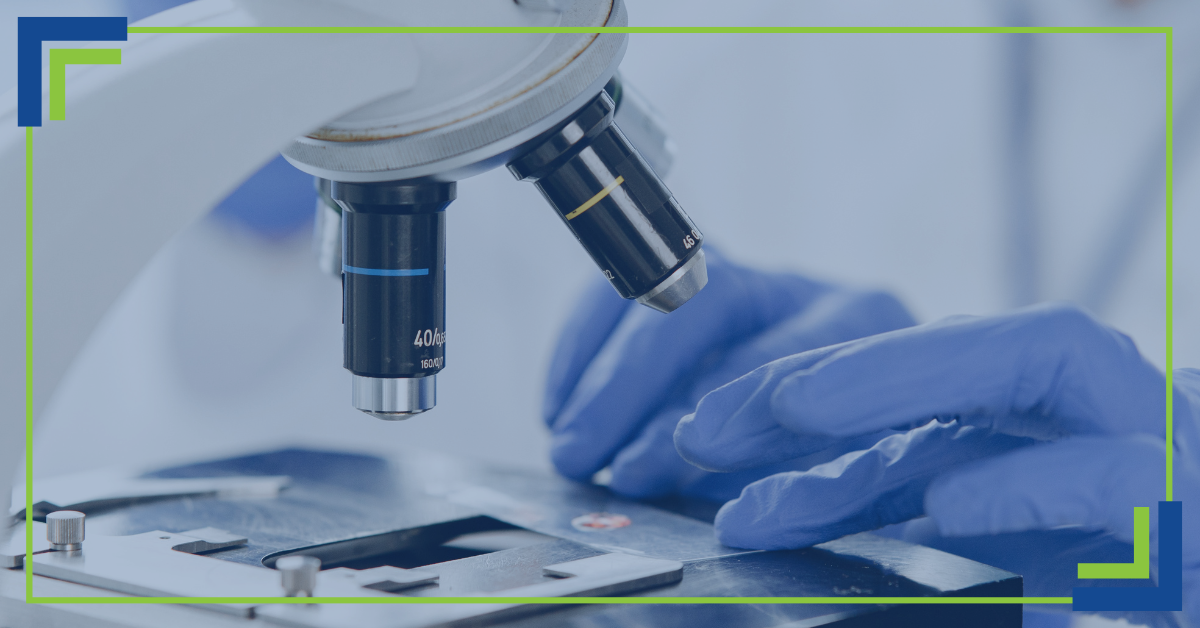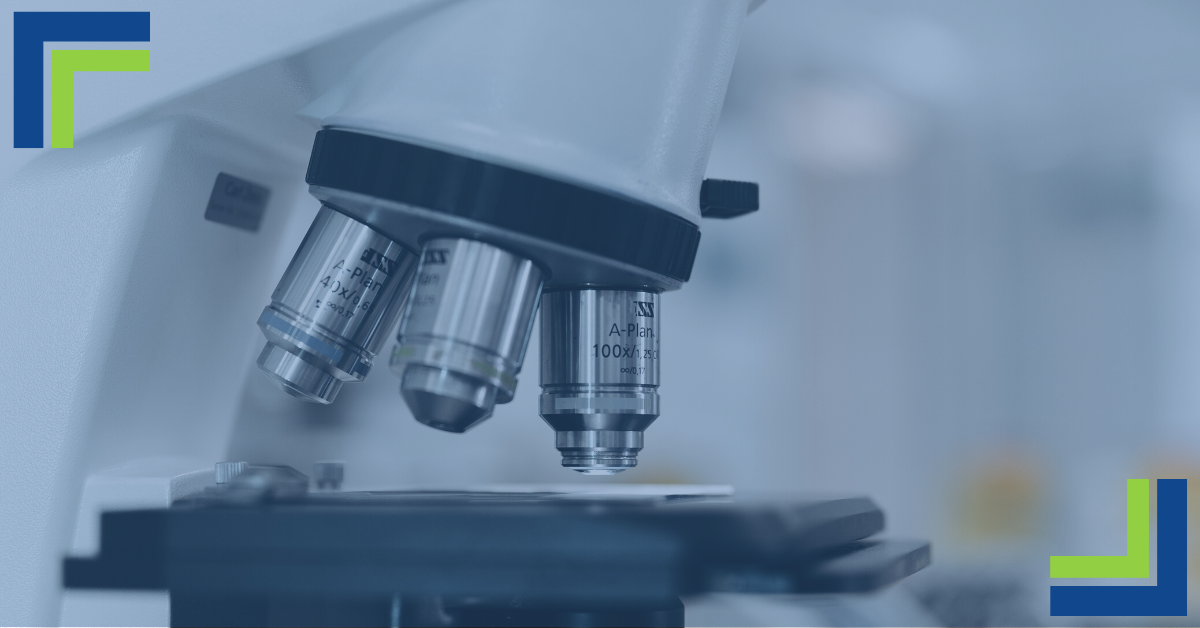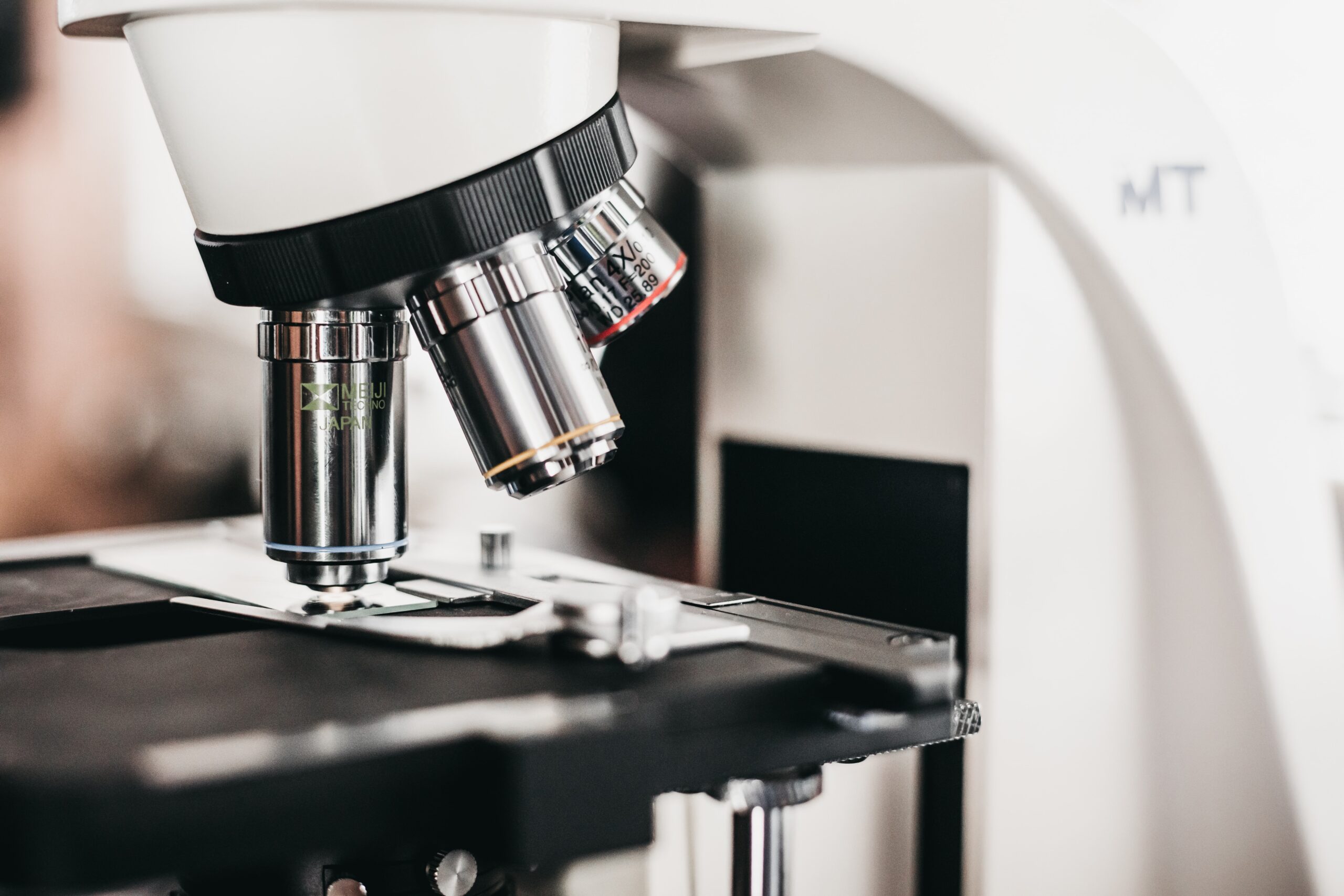
Microscopes are a powerful and widely used tool in the biotech industry. Selecting the right types of microscopes for your research is crucial. Let’s take a look at steps to take and what to consider before pulling the trigger on pricey (but essential) equipment for your lab.
Understanding Your Requirements
These days, there’s a microscope designed for everything. Only you know the specific use case in your lab, use that knowledge to inform your purchasing decision. If you want to share your vision with us, we can help you along the way.
- Primary Purpose: Here’s a good starting question: What purpose will the devices serve in your lab? Will they be used for teaching, quality control, diagnostics, or something else? What kinds of specimens will you be observing?
- Determining Sample Types: Depending on the kinds of samples your research will focus on, you could need specific equipment. Consider what you’ll be examining frequently. Will they be biological specimens, chemicals, or solid materials?
- Budget Considerations: Of course, you can’t just select the most high-end equipment without regard to your budget. Keep in mind that in addition to the initial cost of a microscope, there’s potential for future maintenance and upgrades. Striking a balance between price and quality is tricky, for sure, but worth it.
Types of Microscopes
Just like you wouldn’t use a paring knife to butcher a chicken, you’re not going to be able to examine a nanocrystal very well with an optical microscope. To determine the best application for different kinds of research, let’s put the different options—well—under the microscope!
- Upright/Compound: One of the most common types, this is used in most labs and other scientific settings to view blood cells, parasites, bacteria, cheek cells, and other similar samples.
- Inverted: This device offers magnification ranging anywhere from 40x–400x, and is typically used to view living samples, tissues, and cells in a petri dish. It’s perfect for cell biology, neuroscience, and microbiology!
- Stereo/Dissecting: Typically providing 10x–40x magnification, this equipment is used to observe things you can hold in your hand, like a penny or small animal for dissection. It is often used for samples that don’t allow light to pass through them.
- Fluorescence: This uses high-intensity light instead of visible light to examine specimens that have been stained with a fluorescent dye, presenting a bright image set against a dark background. This is an ideal instrument for ecological studies as well as live versus dead bacteria.
- Digital: Rather than mirrors and lenses, this uses a digital camera to display its images on a digital screen. This allows for easy viewing, recording, and image analysis. Additionally, it generally includes software that helps with measurements, annotation, and image processing. This makes it perfect for general use in both research and educational environments.
- Phase Contrast: This enhances the contrast of transparent and colorless specimens, making them visible without the need for staining. This is achieved by exploiting differences in the refractive index of different parts of the specimen, converting subtle phase shifts in light passing through the specimen into variations in light intensity that can be observed. This instrument is ideal for live-cell imaging, cell culture studies, and detailed biological sample examinations.
Matching Features with Your Needs
You’ve considered your needs to determine the type of microscope you’ll need, but there’s still more work to be done. Depending on the model you get, they can come with several different features and capabilities.
- Magnification and Resolution: Generally, high magnification means higher cost. Keeping this in mind, you probably don’t need the highest magnification capabilities if you’re working with cellular structures.
- Illumination Options: Light can play a key role in the quality of the images you obtain. The differences between LED and halogen could be vast, for example.
- Imaging and Digital Capabilities: Today’s devices have plenty of imaging capabilities that allow for the capture and sharing of images. These features are helpful if you’re collaborating or preparing a presentation.
- Ergonomics and User-Friendliness: No equipment is fun to use if it’s uncomfortable. If the design of something is at odds with the physical build of its user, research will be much more difficult.
Considering Scalability
Do you plan on expanding your lab and research capabilities? If so, it’s good to keep those plans in mind when buying your equipment. After all, renovations and other supplies are costly enough. Wouldn’t it be great to keep your existing tools rather than require all new ones?
Before you buy, explore the possibilities of add-ons and accessories that are compatible with any purchase you’re considering. A tool with great out-of-the-box features may be useless when your lab’s objectives evolve.
Do Your Research
Nobody likes discovering their purchase is falling short of their expectations. This is where careful research can save you that headache altogether! Here are a few things to consider:
- Research Brands and Manufacturers: There’s a reason manufacturers like Zeiss and Olympus have been around for decades. It’s because they make good products! Take some time to research brands and their track records before clicking the “Buy” button.
- Compare Warranties and Support: A robust warranty can be a dealmaker in your search for laboratory tools. Support like BaneBio provides for our customers is next to none.
- Look up Product Reviews: You probably looked at the reviews before your most recent Amazon purchase, so why not do the same with your microscope?
Conclusion
A good laboratory manager will know the lab’s goals and work scope before carelessly purchasing equipment. By understanding your own requirements, types of equipment, and manufacturer options, you can make purchases that will benefit your scientific work for years to come.
Still need a little help making your decision? That’s alright. We’re happy to help you make your decision! Or if you’re simply curious about our microscopes for sale, feel free to take a look. Let’s make your lab the best it can be!




